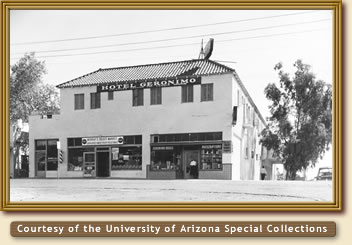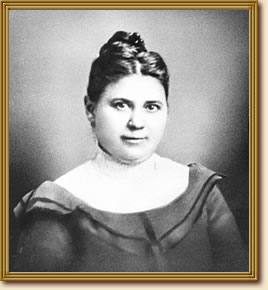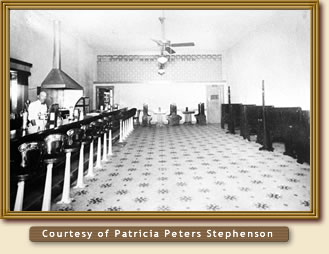 The Geronimo Hotel building sits at the University Boulevard and Euclid Avenue in 1960. Accent One Hour Photo, Sharky's Urban Sports Grill, The Joint and UA offices are in the building now.
The Geronimo Hotel building sits at the University Boulevard and Euclid Avenue in 1960. Accent One Hour Photo, Sharky's Urban Sports Grill, The Joint and UA offices are in the building now.
|
Dust settles on a bustling Southwestern street in the hot late afternoon. Tethered to the outside of the few new buildings, horses wait impatiently for their cowboy and student owners.
The year is 1920, and the street is East University Boulevard - though it was called Third Street back then.
A boxy 1911 electric trolley runs up and down the street on deep tracks, carrying a sundry collection of generally hard-working passengers.
The trolley is a far cry from the mules that only 10 years prior transported professors and students from downtown to what was then an extremely remote school.
"This used to be way out in the desert," said University of Arizona historian Jim Turner. "Professors would come in by train to the station at about Broadway and Fourth Avenue."
There, he continued, they were met by an empty buggy, which was drawn by a single mule.
"They would get in and snap the reins, and the mule would take them to school. He knew where to go. When the professors got to school, they'd just snap the reins again, and the mule would go back to the station."
Enter the illustrious Louise Foucar Marshall, who has shaped the boulevard more than anyone in history. Today, her foundation oversees most of the street and continues to shape the street's future.
Marshall moved to Tucson from Denver at the turn of the century for health reasons and began her graduate studies at the university, which accepted female students since its doors opened in 1891.
She would become the school's first female professor, teaching Latin, English, French, Spanish and botany. While teaching, she began to purchase properties surrounding the expanding campus.
 Marshall Foundation founder Louise Foucar Marshall, UAÍs first female professor, is pictured in this 1901 photograph.
Marshall Foundation founder Louise Foucar Marshall, UAÍs first female professor, is pictured in this 1901 photograph.
|
In the early 1920s, she and her husband Tom developed the block of businesses across from the university's main gate. Known as University Square, the modern-looking shops were instantly popular.
"By the 1910s, brick and wood had taken over as Tucson's building materials," said R. Brooks Jeffrey, coordinator of the College of Architecture's preservations studies department. "Brick was considered more modern and more American than, say, the old-fashioned and Hispanic adobe."
The Geronimo Hotel, where Sharky's and The Joint are now located, and the courtyard behind it were rental houses for winter visitors, Turner said, especially "health seekers."
Turner once interviewed Jim Saunders, a UA student in the '20s, for an article. Saunders said it was popular for students to "get up next to the electric trolley and knock the connector pole off the power wire with a stick," which would "stop the trolley immediately."
But one fated day, Saunders and his cohorts pulled this trick from behind. Their car "plowed right into the back of the stopped trolley. All that was salvageable of the car after the collision was the steering wheel!"
The Marshalls incorporated the Marshall Charitable Trust in 1930, which became the present Marshall Foundation.
"Just after midnight on April 27, 1931," one of the most infamous events in Tucson history occurred when "Tom Marshall was shot four times with a pistol. He died three weeks later in a hospital," Turner said.
Louise Marshall was acquitted after 20 minutes of deliberation.
"The jury found that Mr. Marshall died from complications resulting from inept medical treatment," Turner said.
 The soda fountain at University Drug was a popular student hangout in the 1920s.
The soda fountain at University Drug was a popular student hangout in the 1920s.
|
Louise Marshall died alone in 1956.
University Boulevard would remain a busy center of college life until a decline in activities in the 1960s.
"(The street) wasn't much when I came here in 1967," said professor of English Charles Scruggs. "It was just a men's store, a drug store, a couple of dinky-ass places."
Scruggs added that the lull on University Boulevard had much to do with the student unions.
"In those days, the food at the student union was cheap and good, and any restaurants that sprung up on the periphery of the university usually died a quick death because they could not compete with the student union fare, especially the Mexican food," he said.
Frenzy was reborn on Third Street about the time it was named University Boulevard in 1969. Coffee shops, taverns and restaurants began to refill the vacant buildings.
In the '70s, the once regal Geronimo Hotel became a flophouse of sorts, attracting "bottom of the barrel" patrons.
"It seemed like the cops, fire trucks and ambulances were there every weekend for everything from suicides to dumpster fires," said Turner, who lived across the street from the hotel at the time.
Into the late '80s and the '90s, the boulevard enjoyed stability. Businesses came and went, but buildings were, in general, consistently occupied.
Today, the Marshall Foundation owns every property on University Boulevard between North Park Avenue and North Euclid Avenue, except Frog & Firkin, No Anchovies, Chen's Cafe, and Landmark Clothing and Shoes.
Scruggs, who has watched the street change over the years, believes it reflects the spirit of the university.
"It has only evolved," he said, "because of the way the university has evolved."


